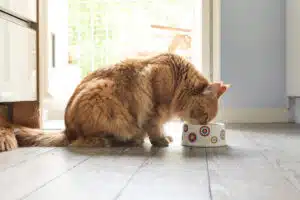Getting a feel for your cat’s heart rate can be a good indication of how your pet is doing. The heart is a muscle which pumps blood, and it helps to provide energy to the muscles. It is also important to note that a rapid heartbeat can be an indicator of a serious medical condition.
When measuring a cat’s heart rate, the first thing to do is to determine how many beats are in a minute. To do this, you will need a stopwatch or a second hand. You will also need to feel your cat’s heart with your fingers. Typically, the heart of a cat is located on the left side, just behind the front leg. The best place to feel it is by gently pressing your fingers in. You can also use a stethoscope to listen to your pet’s heart.
A cat’s respiratory rate is also important. While there are many different ways to measure this, the most accurate and informative one is to count the number of breaths your cat takes in 15 seconds. Ideally, you will be able to do this while your pet is sitting or standing.
Another way to measure your pet’s respiratory rate is to watch the sides of his chest. If your cat is relaxed and standing, this should be a breeze. If he is a little more active, you should watch the sides move in and out to see if there is a difference. This may be an indication of a medical emergency, so it is best to contact your veterinarian right away.
In addition to the heart rate, you should also measure the pulse. The pulse in a cat is usually the best indicator of heart rate, but there are several places on a cat’s body where the pulse is present. A good pulse point is located on the inside of each back leg, near the groin area. In addition, a cat’s pulse may be boosted by an uncomfortable area. If your cat has a heart murmur, you may also see a bump-bump effect. You should be able to feel the cat’s heart on the other hand, but it may not be as obvious as the pulse point.
The cat’s heart rate may be on the small side, but that doesn’t mean that it isn’t a good indicator of how your pet is doing. In fact, it is one of the most important vital signs to measure. It can help you identify problems with your pet’s health before they become more serious. While you can check your cat’s pulse on your own, it’s best to consult with a veterinarian before making any changes to your pet’s diet or routine.
The most important part of measuring your cat’s heart rate is to understand the difference between normal and abnormal. An abnormal heart rate can indicate that your pet is having problems with a number of issues, such as heartworms, kidney disease, or even congenital heart defects. You should also know that a rapid heart rate can indicate a more serious health problem, such as heart failure. Similarly, anemia can cause an elevated heart rate. Likewise, an overactive thyroid gland can also lead to a fast heartbeat.














